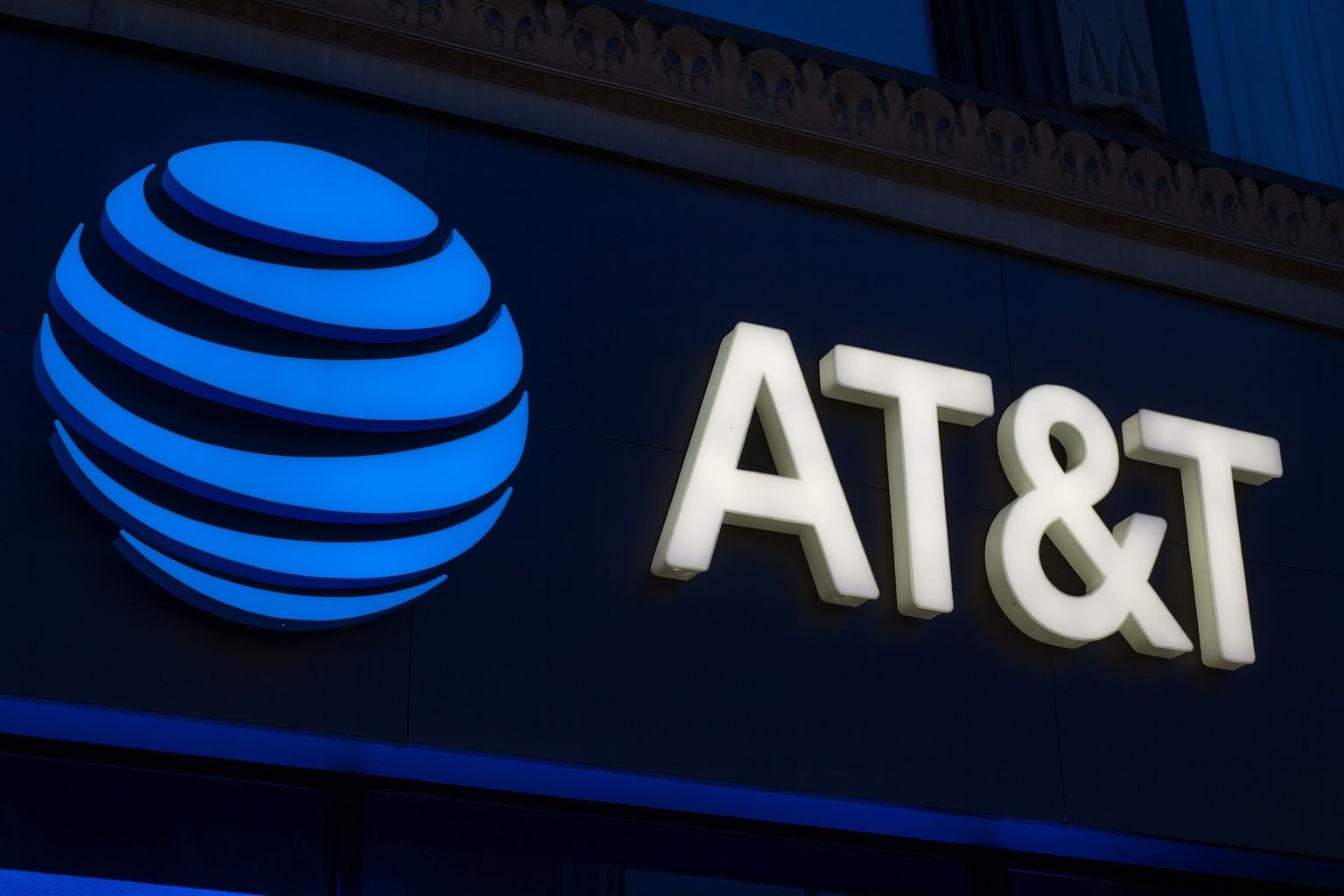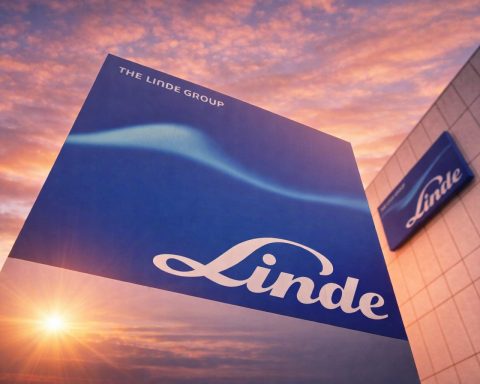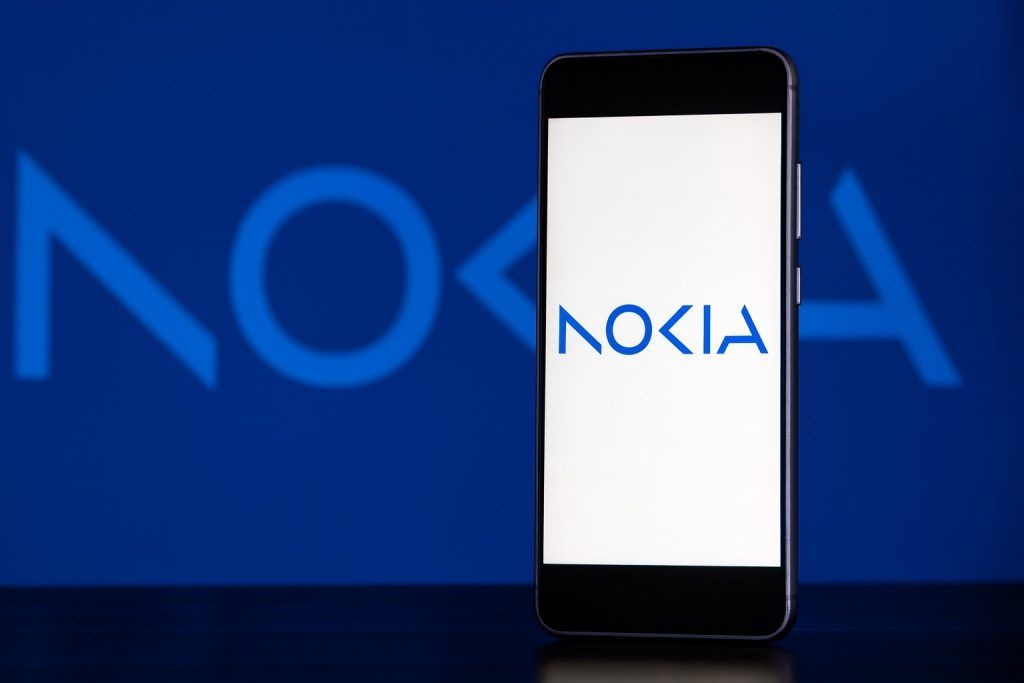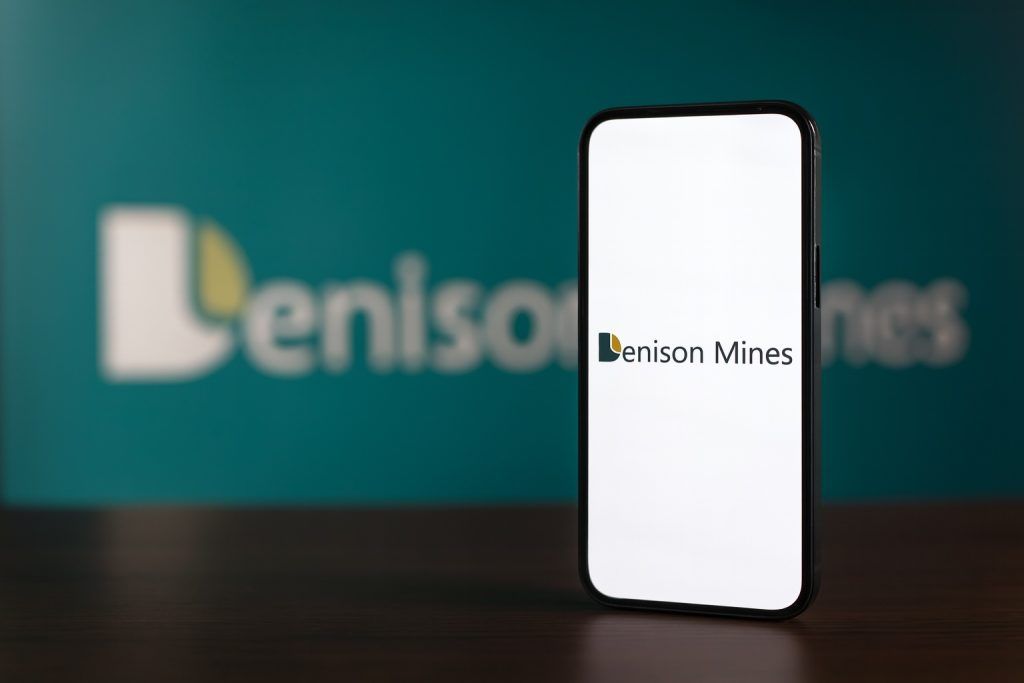- Stock Slips Despite Subscriber Boom: AT&T (NYSE: T) shares are trading around the mid-$24 range after earnings – down from about $26 at the start of the week. The stock fell 3.6% on Thursday to $24.62 [1], extending a roughly 6% slide over the past five trading days amid mixed earnings news.
- Q3 Earnings: Big User Gains, Minor Misses: In Q3 2025, AT&T added 405,000 postpaid phone subscribers (vs ~334,000 expected) [2] – its best wireless growth this year – plus 558,000 broadband adds (fiber + wireless) [3]. Revenue of $30.7 billion (+1.6% YoY) slightly missed forecasts (~$30.85 B) [4], and adjusted EPS of $0.54 matched estimates [5]. The company reaffirmed its full-year guidance for 2025 [6].
- Market Jitters on Margins: AT&T’s initial post-earnings pop fizzled – the stock jumped ~4% pre-market on the subscriber beat, then closed 2% lower on Oct. 22 [7]. Investors balanced the “so-so” quarter – stellar customer gains versus a slight revenue shortfall and costly iPhone promos that could squeeze profit margins [8]. Analysts warn that rising phone upgrade rates and promotions may “significantly pressure margins” and churn industry-wide [9].
- New AT&T vs. T-Mobile Battle: This week AT&T launched a bold ad campaign with actor Luke Wilson, calling out rivals’ “misleading” 5G coverage claims [10] [11]. “We’re not just building a network – we’re building trust,” said AT&T COO Jeff McElfresh, touting “blazing-fast, rock-solid connectivity” and AT&T’s unique service guarantees across wireless and fiber [12]. The move underscores intensifying competition as T-Mobile and Verizon vie for subscribers.
- Telecom Sector Shake-Up:T-Mobile just posted record customer growth (1.0 million phone net adds in Q3) yet saw its stock drop ~3.5% on earnings day [13] [14], reflecting profit-taking and high expectations. Verizon, still the largest carrier, has been losing ground – it even replaced its CEO this month (hiring ex-PayPal chief Dan Schulman) in an urgent bid to reignite growth [15]. All three “Big 3” carriers are spending heavily on 5G networks and promotions, battling churn as cable companies and new entrants nibble at the market [16] [17].
- Analysts’ Take – Cautious Optimism: Wall Street remains mildly bullish on “T.” About 17 of 23 analysts rate AT&T a Buy/Overweight, versus a handful of Holds, and the average 12-month price target is ~$30–$31 (≈15% above current levels) [18]. Goldman Sachs recently reiterated a “Buy” and raised its target to $32–$33, calling AT&T’s big 5G and fiber investments a “smart long-term move” [19]. However, Barclays downgraded AT&T to Hold, arguing the stock’s rebound already “largely reflects its operational gains” and flagging fierce price wars and debt levels [20].
- Dividend and Outlook: AT&T’s 4.2% dividend yield remains a key draw [21], especially as Verizon’s recent slide pushed its yield above 7% [22]. (By contrast, growth-focused T-Mobile only initiated a small dividend last year.) Analysts note AT&T’s shares trade at a cheap ~13× forward earnings – well below the telecom industry average (~21×) [23]. That undervaluation and stable payout support a favorable long-term case. Yet, slower growth and aggressive pricing in wireless could cap near-term upside [24]. In the short run, AT&T’s extensive promotions (e.g. free iPhone deals) and a coming holiday upgrade cycle may pressure profits [25]. Longer term, AT&T’s return to its connectivity roots – shedding media assets, doubling down on 5G spectrum and fiber broadband expansion – is intended to solidify its competitive position and pay down debt [26] [27]. Many experts see those strategic bets laying groundwork for future gains, even if 2025’s rally has paused.
AT&T Stock Price: Latest Moves and Trends
AT&T’s stock is hovering in the mid-$24s as of October 24, 2025, after a choppy week. Shares closed at $24.62 on Thursday [28], down from around $26.10 on Monday [29]. That slide of roughly 5.7% erased gains from earlier in the month. The volatility came amid earnings results and broader market swings – AT&T had been mostly range-bound in the mid-$20s throughout October [30] before this week’s drop. Even so, the stock remains about 20% higher than a year ago [31], reflecting a recovery from 2024 levels. Over the past 12 months AT&T has traded between roughly $21 (52-week low) and $29.8 (high) [32]. By comparison, rival Verizon’s stock has lagged, with AT&T outperforming Verizon in one-year return [33] [34].
AT&T is known as a relatively stable, income-oriented stock. Its beta ~0.4 means it’s only about 40% as volatile as the overall market [35] [36]. This defensive profile is bolstered by the company’s dividend, which currently yields around 4.2% annually [37]. (AT&T pays $0.2775 per share quarterly, and recently declared its next dividend for Nov. 3 [38].) That yield is attractive, though not the highest in the sector – Verizon’s slide to multi-year lows has pushed its yield above 7% [39]. In contrast, T-Mobile only began paying dividends in 2024 (at ~$1 per year, a <0.5% yield at its stock price around $220), preferring to return capital via share buybacks.
Year-to-date, AT&T stock is up roughly 15–20% in 2025 [40]. However, it has underperformed the broader market, trailing indexes like the S&P 500 and Nasdaq which rallied strongly in 2025’s tech rebound [41]. Telecom stocks have been weighed down by their slower growth and rising interest rates, which make high debt loads more costly and high dividends slightly less dazzling. Still, AT&T’s modest rise this year marks a welcome rebound from 2022–2023 levels, when the stock and its peers slumped amid cord-cutting and 5G spending fears. Today, investor sentiment toward AT&T is improved but cautious – reflecting confidence in its stability and payouts, tempered by concerns over its growth prospects.
Q3 2025 Earnings: Subscriber Surge vs. Revenue Miss
AT&T’s third-quarter 2025 report, released October 22, showcased a classic telecom story of strong customer growth but tight margins. On the bright side, AT&T handily beat expectations on user gains:
- Wireless: The carrier added 405,000 net postpaid phone subscribers – decisively above the ~334,000 analysts forecast [42]. This was AT&T’s biggest wireless phone add figure of 2025 and a sign that its promotions are luring customers. Notably, churn remained low (~0.92%) [43], meaning AT&T is keeping existing users even as it signs up new ones.
- Broadband: AT&T also logged 558,000 total broadband net adds [44], its highest in over 8 years. That includes 288,000 fiber internet subscribers and 270,000 fixed wireless “Internet Air” customers [45]. The fiber growth was a quarterly record, reflecting the company’s rapid fiber-optic rollout, while the 5G-based home internet offering (fixed wireless) is gaining traction albeit on a smaller base.
These customer wins were fueled by aggressive marketing and bundles. AT&T rolled out hefty iPhone 17 promotions in Q3 – effectively offering new devices on generous terms – and pushed discounts for those who bundle wireless and fiber services [46]. Those tactics paid off in volume: over 41% of AT&T’s fiber households now also take a mobile plan, indicating successful cross-selling [47]. As CEO John Stankey put it on the earnings call, the strategy is to make AT&T a one-stop connectivity provider for both phone and home internet, boosting subscriber loyalty.
On the financial side, results were more mixed:
- Revenue: Q3 revenue hit $30.7 billion, up ~1.6% year-over-year [48]. However, this slightly missed Wall Street’s $30.85 B target [49]. The shortfall came from the equipment side – AT&T sold a lot of pricey smartphones (equipment sales up 6% YoY) but not quite as many as hoped [50] [51]. Some customers waited on new iPhones or held off for holiday deals, and heavy device subsidies cut into net sales. Meanwhile, service revenues (more important for profitability) rose ~2% in the wireless segment [52], thanks to the larger customer base.
- Earnings: Adjusted earnings per share were $0.54, flat-ish from a year ago and exactly in line with analyst consensus [53]. So, no surprise there – AT&T delivered the earnings it promised. On a GAAP basis, EPS was a lofty $1.29, but that includes a one-time $5.5 billion gain from selling the DirecTV TV business stake [54]. Excluding that accounting gain, actual net income was fairly steady, indicating healthy operational margins despite all the promotional spending.
- Guidance: AT&T reaffirmed its full-year 2025 outlook [55]. The company still expects low-single-digit percentage growth in revenue and about $1.97–$2.07 in adjusted EPS for the year, with free cash flow around $16 B. Executives noted results are tracking toward the higher end of guidance [56] – a confident signal. They also highlighted plans to roughly double AT&T’s fiber footprint by 2030 and progress in trimming debt, suggesting the long-term strategy is on course [57].
In all, AT&T’s Q3 painted a picture of robust user growth but at a cost. The company is clearly willing to spend on promos and subsidies to win subscribers, leveraging Apple’s iPhone launch season to grab market share. That helped smash subscriber forecasts and should bode well for future revenue (more customers paying bills). Yet the slight revenue miss and flat earnings show the profitability challenge: those new customers came at the expense of higher costs (device subsidies, marketing) that ate into the quarter’s top-line and margins [58]. This “growth vs. margins” trade-off is a central theme not just for AT&T, but across the telecom industry this year.
Market Reaction: Stock Swings and Investor Concerns
Wall Street’s response to AT&T’s report was an exercise in tempered enthusiasm. Initially, the blockbuster subscriber numbers sparked a mini-rally – AT&T’s stock jumped about 4% in pre-market trading on Oct. 22 after the earnings release, as headline numbers impressed [59]. However, once the market fully digested the details, sentiment soured by midday. By the close of the 22nd, T shares were down ~2% at $25.52 [60], and the sell-off continued with another 3.6% drop the next day to $24.62 [61].
What triggered the reversal? It appears investors “sold the news” after bidding up AT&T ahead of earnings. The stock had been flat to slightly higher in the days before the report, so some optimism was already priced in [62] [63]. Once results hit, traders zeroed in on the less rosy aspects:
- Slight Revenue Miss: Coming in ~$150 M shy of the sales forecast [64] raised questions about AT&T’s pricing power and device sales execution. If AT&T had to cut prices or didn’t move as many devices, that could hint at softness in consumer spending or competition nipping at its heels.
- Promotional Costs: The surge in subscribers, while great for future revenue, raised immediate cost flags. Hefty iPhone subsidies and bundle discounts mean thinner margins in the near term. AT&T’s operating expenses in wireless jumped ~3.8% in Q3 due to selling more pricey phones with promotions [65]. A top telecom analyst at MoffettNathanson warned that an uptick in phone upgrade activity industry-wide will “be a stiff headwind for churn, ARPU, and margins” going forward [66]. In other words, winning customers via promotions is a double-edged sword: it boosts subscriber counts now but can crimp profitability per customer.
- Competitive Worries: AT&T wasn’t alone in falling – Verizon’s stock also slid ~2% on Oct. 22 [67], and T-Mobile dropped ~3.5% the next day after its earnings. This suggests a broader market worry that telecom price wars are heating up. All major carriers are jockeying for the same pool of customers, potentially eroding pricing power. Investors are asking: Will AT&T (and others) need to keep offering rich promotions (free phones, big discounts) to maintain momentum? If so, profit growth could stall across the sector.
By the end of the week, AT&T’s stock essentially round-tripped to where it stood pre-earnings [68] – roughly mid-$24s, which is the level from a week prior. The sharp swings captured the market’s ambivalence: optimism about AT&T’s operational gains, offset by lingering concern about the quality of those gains (i.e. revenue and margins). One analyst dubbed the quarter “so-so” – phenomenal subscriber growth but “mediocre” financial upside [69]. For a stock like AT&T, which had run up ~20% over the past year, that mixed outcome wasn’t enough to propel further immediate gains.
AT&T’s Latest Moves: 5G, Fiber and Fighting Back in Wireless
Beyond the earnings numbers, AT&T has made notable news in recent days that speak to its strategy and the competitive landscape:
- New Ad Campaign Targets Rivals: On Oct. 23, AT&T unveiled a high-profile advertising campaign featuring actor Luke Wilson. The campaign’s mission: “stand up for consumers” by debunking competitors’ claims and highlighting AT&T’s strengths [70] [71]. In a press release, AT&T took direct aim at “empty promises” from other carriers, asserting that “AT&T delivers more coverage, more reliability & more accountability” than the competition [72]. The company even touts that it now covers 300,000 more square miles than T-Mobile with its network [73]. This very public call-out signals how heated the AT&T vs. T-Mobile rivalry has become. T-Mobile’s edgy marketing and claims of 5G superiority have clearly irked AT&T, which is responding with a “prove it” approach. In the campaign, AT&T spotlights its AT&T Network Guarantee, billing itself as the first carrier to guarantee both wireless and fiber service quality [74] [75]. The ads, tagged “This ain’t our first rodeo,” use humor via Luke Wilson but carry a serious message: AT&T is confident enough in its network to offer money-back style guarantees and wants to expose what it calls rivals’ “misleading” boasts [76]. “We don’t make promises we can’t keep – we deliver the connectivity people rely on and we stand behind it. Period,” said Kellyn Smith Kenny, AT&T’s chief marketing officer [77]. And COO Jeff McElfresh summed up the effort: “We’re not just building a network – we’re building trust… Coverage, Reliability, Accountability…these aren’t extras – they’re essentials” [78]. Such pointed language from AT&T’s top brass underscores the high-stakes battle for subscribers.
- Focusing on 5G and Fiber Expansion: AT&T’s big investments in network infrastructure continue to shape its news. In late August, AT&T announced a $23 billion deal to acquire 50 MHz of wireless spectrum from EchoStar [79] – a huge addition of mid-band and low-band frequencies to bolster its 5G coverage. And back in May, AT&T agreed to buy Lumen Technologies’ consumer fiber business for $5.75 billion, adding about 1 million fiber subscribers and expanding into cities like Denver and Seattle [80]. These deals, expected to close by early 2026, aim to “future-proof” AT&T’s network with more capacity and reach. As CEO John Stankey put it, the EchoStar spectrum “bolsters and expands our spectrum portfolio” for 5G, while the Lumen acquisition will extend AT&T fiber to 5 million new locations [81]. In short, AT&T is doubling down on being a broadband powerhouse, both wireless and wired. At the same time, AT&T has been streamlining to fund these bets. This summer it sold off its remaining stake in DirecTV (cementing its exit from the pay-TV business) [82]. The company is also in the midst of a $20 billion share buyback plan (2025–2027) to return cash to shareholders [83] – a sign of confidence in its cash flows. Of course, AT&T’s debt load is still hefty (net debt around 3× EBITDA post-spectrum purchase) [84]. But management vows to cut leverage to ~2.5× by 2028, aided by cost cuts and an anticipated $6–8 billion in tax benefit windfalls over the next few years [85]. In essence, AT&T is refocusing on its core – wireless and fiber connectivity – and shedding distractions (like media ventures) to better compete in what it does best. That context helps explain both the recent promotions (investing in customer growth) and the head-to-head marketing against rivals (playing offense to seize market share).
- Competitive Landscape Shifts: The U.S. telecom arena is evolving in ways that impact AT&T. T-Mobile, now the #2 carrier, has been the growth leader – a fact AT&T is clearly responding to. T-Mobile reported an industry-record 2.3 million net new customers in Q3 (including 1.0M phone users) [86], and it slightly raised its 2025 outlook for subscriber additions and cash flow [87]. It’s also undergoing a CEO transition (Mike Sievert stepping down for new chief Srini Gopalan on Nov. 1) after transforming T-Mobile into a post-merger juggernaut [88]. Meanwhile, Verizon, the long-time market leader, has been on the defensive. Verizon’s subscriber growth has lagged, and it recently made the dramatic move of naming Dan Schulman (former PayPal CEO) as its new CEO effective next year [89]. That surprise October 6 announcement signaled Verizon’s urgency to reboot its strategy. Verizon’s strengths (premium network quality, business customers) remain, but it has been losing consumer share and was slow to match some of T-Mobile’s unlimited-plan perks [90]. Now, with a new CEO, Verizon is expected to fight back, possibly by matching competitors’ discounts or leveraging its high-end reputation to win back users [91] [92]. For AT&T, these competitive shifts mean no room for complacency. It faces a two-front battle: T-Mobile’s continued aggressive offers on one side, and Verizon’s bid to turn around and protect its base on the other. Additionally, cable companies like Comcast and Charter are quietly growing their wireless subscriber bases (reselling capacity at budget prices), which nibble particularly at Verizon and AT&T’s value-conscious customers [93]. And even Dish Network is trying (struggling, but trying) to build a new 5G network as a fourth facilities-based carrier [94]. Regulators note that over 90% of U.S. wireless subscribers are now controlled by AT&T, Verizon, and T-Mobile [95] – a highly consolidated market that Dish and others have so far failed to crack meaningfully. In such an environment, the “big three” carriers are intensely focused on stealing each other’s customers while defending their own, which explains the increasingly combative marketing and promotional tactics. AT&T’s latest campaign and its subscriber gains show it’s firmly in this fight.
Analyst Insights and Stock Outlook
Despite recent volatility, the consensus on Wall Street is that AT&T’s stock has more room to run – albeit modestly. Analyst ratings skew positive: roughly 17 out of 23 analysts covering AT&T rate it a Buy or Overweight, with the remainder on Hold [96]. There are no outright “Sell” ratings from major firms at the moment. The median 12-month price target is about $30–$31 [97], implying ~15% upside from current levels. In other words, experts see AT&T grinding higher over the next year, even if not dramatically so.
What’s driving their optimism? For one, AT&T’s valuation looks appealing. The stock trades around 13× forward earnings, which is well below the telecom industry average (~21×) [98] and also cheaper than the broader market. AT&T’s enterprise value-to-EBITDA and other metrics likewise suggest it’s undervalued relative to its cash flows and assets. Part of that discount is due to AT&T’s debt and past misadventures (the Time Warner deal, etc.), but many analysts believe those legacy issues are largely baked into the price now. At a mid-$20s share price, AT&T offers a high dividend yield and a stable business – a combo that is attractive in uncertain markets.
Speaking of that dividend, AT&T’s ~4.2% yield is frequently cited as a key reason to own the stock [99]. It provides solid income, especially versus the S&P 500’s sub-2% yield. Analysts note that the dividend was cut and reset in 2022 (during the WarnerMedia spinoff), bringing it to a more sustainable level. With free cash flow expected around $16 billion this year, the ~$8 billion annual dividend bill is well-covered. AT&T’s management has emphasized its commitment to the payout [100]. For income-focused investors, that reliability is a selling point – and some on Wall Street argue the stock’s yield could draw buyers if bond yields stabilize or fall.
Growth catalysts are another focus. AT&T’s strategic bets on 5G and fiber could drive improved performance in coming years. Goldman Sachs, for example, maintained its “Buy” rating and recently raised its price target to the ~$32–$33 range, specifically highlighting that AT&T’s investments in mid-band 5G spectrum and fiber expansion are smart long-term moves that will strengthen its market position [101]. The logic: these network upgrades will allow AT&T to better compete for high-value customers (both mobile and broadband) and potentially even charge premium prices for superior service, all of which supports revenue and profit growth down the road.
Additionally, AT&T’s focus on convergence – selling wireless + home internet bundles – is seen as a forward-looking strategy. The company’s ability to cross-sell (as evidenced by that 41% fiber-wireless overlap stat) could boost customer lifetime value and reduce churn, which in turn improves the financial outlook. Some analysts also point out that AT&T’s divestiture of media and TV assets has reduced distractions and capital drag, allowing the firm to concentrate on its core telecom business. This back-to-basics approach, coupled with cost cuts and debt reduction, could incrementally lift earnings and investor confidence over the next few years.
That said, no one is predicting explosive growth for AT&T, and there are clear headwinds tempering enthusiasm. Barclays recently downgraded AT&T to Equal Weight (Hold), cautioning that the stock’s strong rebound over the past year “largely reflects [its] operational gains” already [102]. In other words, much of the good news is priced in. Barclays and other cautious voices flag two big challenges: intense competition and high debt [103]. The wireless price war shows no sign of abating – if anything, T-Mobile’s and Verizon’s moves indicate it could get fiercer. That could pressure AT&T’s service revenue growth and margins in coming quarters if the company has to respond with more discounts or can’t push through price increases on plans.
On the debt front, AT&T’s ~$130+ billion debt pile (though reduced after the Warner spinoff) remains among the highest in corporate America. Rising interest rates make refinancing or issuing new debt costlier. While AT&T has managed this well so far – and is chipping away at the debt ratio – it’s a weight on the stock’s valuation. Credit rating agencies and investors will be watching that debt-to-EBITDA figure and expecting it to improve as promised. Any stumble in cash flow or higher network investment needs could slow the deleveraging plan.
Finally, there’s the factor of growth vs. shareholder returns. AT&T is trying to do both – invest in 5G/fiber and buy back shares and pay a big dividend. That balancing act will be scrutinized. Some analysts worry that if economic conditions worsen or the competitive environment forces unexpected costs, AT&T might have to trim buybacks or, in a worst case, constrain dividend growth to keep funding its network build. So far the company insists it can comfortably do all of the above, but it’s a fine line to walk.
Bottom line: The expert consensus paints AT&T as a stable, moderately undervalued stock with a nice income stream – a “cautious Buy” for long-term value and yield. Short-term, the stock could remain choppy, especially if promotional expenses stay high and sector news (like Verizon’s upcoming earnings on Oct. 29) underlines competitive pressures. But long-term, AT&T’s moves to strengthen its networks and focus on connectivity are viewed as the right path. “Execution is key” is a common refrain: if AT&T can continue adding subscribers, growing fiber, and gradually improving its financials (while avoiding price wars that erode profits), many analysts see the stock grinding higher and delivering solid total returns (price appreciation plus that dividend). As one summary from TechStock² noted, analysts “favor AT&T’s 4%+ dividend yield and cheap valuation… but also note that the company’s slow growth profile and ongoing price wars in wireless could limit near-term stock appreciation.” [104] In other words, investors in AT&T should expect steady, not spectacular, progress – with an eye on both the competitive battlefield and the balance sheet as crucial variables in the coming months.
Sources: Recent AT&T and industry news reports and analysis [105] [106] [107] [108].
References
1. www.nasdaq.com, 2. www.reuters.com, 3. www.reuters.com, 4. www.reuters.com, 5. www.reuters.com, 6. ts2.tech, 7. ts2.tech, 8. ts2.tech, 9. www.reuters.com, 10. finviz.com, 11. finviz.com, 12. finviz.com, 13. ts2.tech, 14. ts2.tech, 15. ts2.tech, 16. ts2.tech, 17. ts2.tech, 18. ts2.tech, 19. ts2.tech, 20. ts2.tech, 21. ts2.tech, 22. ts2.tech, 23. ts2.tech, 24. ts2.tech, 25. www.reuters.com, 26. ts2.tech, 27. ts2.tech, 28. www.nasdaq.com, 29. www.investing.com, 30. ts2.tech, 31. ts2.tech, 32. ts2.tech, 33. ts2.tech, 34. ts2.tech, 35. ts2.tech, 36. ts2.tech, 37. ts2.tech, 38. ts2.tech, 39. ts2.tech, 40. ts2.tech, 41. ts2.tech, 42. www.reuters.com, 43. ts2.tech, 44. www.reuters.com, 45. ts2.tech, 46. ts2.tech, 47. ts2.tech, 48. ts2.tech, 49. ts2.tech, 50. www.reuters.com, 51. www.reuters.com, 52. ts2.tech, 53. www.reuters.com, 54. ts2.tech, 55. ts2.tech, 56. ts2.tech, 57. ts2.tech, 58. www.reuters.com, 59. ts2.tech, 60. ts2.tech, 61. www.nasdaq.com, 62. ts2.tech, 63. ts2.tech, 64. www.reuters.com, 65. www.reuters.com, 66. www.reuters.com, 67. ts2.tech, 68. ts2.tech, 69. ts2.tech, 70. finviz.com, 71. finviz.com, 72. finviz.com, 73. finviz.com, 74. finviz.com, 75. finviz.com, 76. finviz.com, 77. finviz.com, 78. finviz.com, 79. ts2.tech, 80. ts2.tech, 81. ts2.tech, 82. ts2.tech, 83. ts2.tech, 84. ts2.tech, 85. ts2.tech, 86. ts2.tech, 87. ts2.tech, 88. ts2.tech, 89. ts2.tech, 90. ts2.tech, 91. ts2.tech, 92. ts2.tech, 93. ts2.tech, 94. ts2.tech, 95. ts2.tech, 96. ts2.tech, 97. ts2.tech, 98. ts2.tech, 99. ts2.tech, 100. ts2.tech, 101. ts2.tech, 102. ts2.tech, 103. ts2.tech, 104. ts2.tech, 105. www.reuters.com, 106. ts2.tech, 107. finviz.com, 108. ts2.tech







